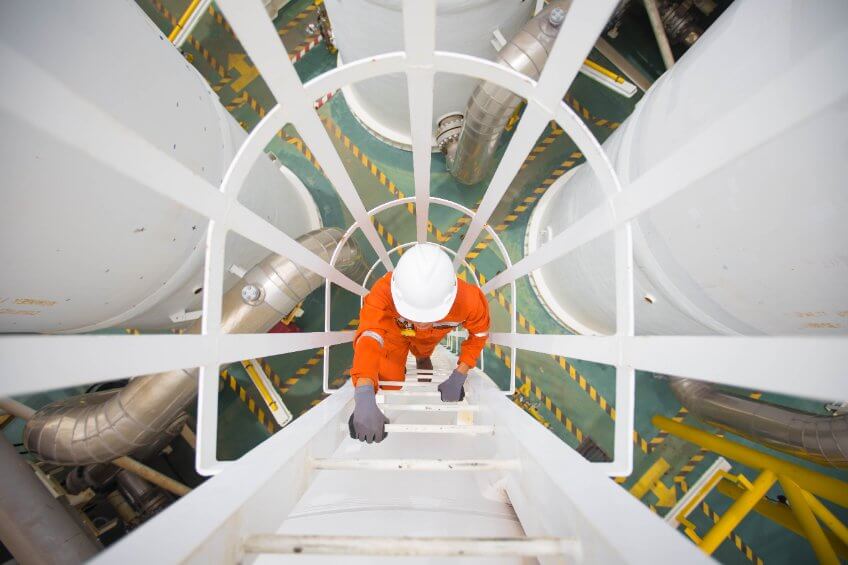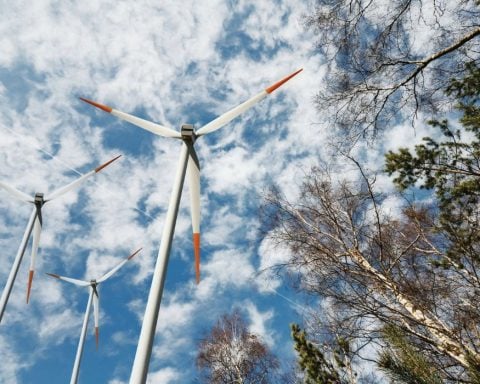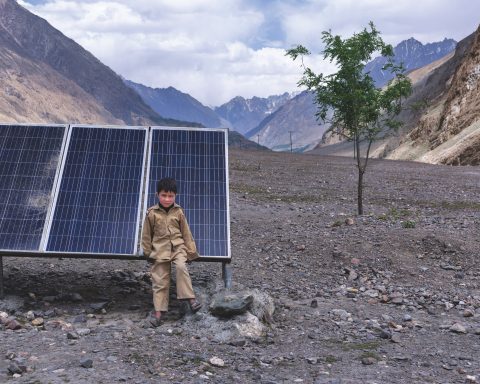In 2013, a buddy of Newfoundland apprentice electrician Devin Keats convinced him to go west to work in the oil and gas fields of Alberta. Keats took his friend’s advice, joining Syncrude’s oil sands operations in Fort McMurray, later moving to Imperial Oil’s Kearl Lake oil sands mine project.
In 2014, a global oil glut sent petroleum prices spiralling down. By 2016, oil prices were 70% what they were two years earlier. Nearly one in three – or more than 100,000 – Alberta oil patch workers, lost their jobs. “It was scary,” says Keats, who was laid off from the Kearl Lake project. “I watched as some of my friends sold off their assets or even declared bankruptcy.”
But there is hope for oil and gas workers like Keats that they can transition into clean energy jobs. The demand for renewable energy tradespeople is growing. Geni Peters, director of research at ECO Canada, says that 294,000 workers will be needed by 2025 in the sector, which includes both renewable energy and energy efficiency activities. Currently there are 282,200 workers.
Keats was luckier than most who lost their jobs in the industry. When he was laid off, he jumped around for a bit, eventually heading to Newfoundland to take a job as an electrician on the Hebron GBS (for “gravity based structure”) drilling rig off the coast of the Grand Banks. “Most companies in Newfoundland wouldn’t even look at a tradesperson with only experience from out west,” says Keats.
The GBS job lasted six months, and Keats suddenly faced a harsh reality: give up on the oil and gas industry if he wanted secure work. Inspired by an increasing number of inquiries from Newfoundlanders asking his advice about solar energy, Keats decided to learn how to install solar panels. “I fell in love with the industry,” he confesses. “From the planning to the installation and start-up, every step of solar installation is engaging, and the final product so rewarding.”
Keats also joined an organization, Iron & Earth, that had been created by laid-off oil sand workers in the spring of 2016. The group realized that their expertise might be transferable to the renewable energy sector. They had two main questions: how could they connect with employers in the nascent sector, and would they need to upgrade their skills to work on wind turbines, geothermal plants, solar farms and at carbon capture facilities?
It was scary. I watched as some of my friends sold off their assets or even declared bankruptcy.
-Devin Keats, instructor for a solar skills program with Iron & Earth
Cue Iron & Earth’s Climate Career Portal (CCP) online tool, launched earlier this year as a bridge linking oil and gas employees as well as Indigenous communities with the renewable energy sector. CCP is overseen by Iron & Earth’s Innovation & STEM manager Jodie Hon, an engineer who began her career with Shell Canada, then, citing her love of nature, switched to the renewable sector. As part of the CCP, Hon is overseeing the rollout this fall of a new mentorship program and is also leading the development of a career blueprint program, which will help workers break down the transition into small achievable steps.
“I’ve sensed relief that we exist and that there are support and tools available for people who want to make that transition,” Hon says.
Iron & Earth is also partnering with educational institutions so that young trades graduates will be able to use the CCP to kick-start a career, Hon says. “It’s crucial that Canada’s renewable energy sector has access to a large source of skilled workers. We need to shift our country’s labour market in order to implement solutions to slow climate change.”
This past summer, Keats, 29, was the instructor for one of the solar skills programs Iron & Earth ran in Nunatsiavut communities in northern Labrador, training them in solar installation. It was a “massive success,” says Keats. “If we apply this model across Canada, with the support of government and skilled workers, we could easily reach our goal of being carbon neutral.” (Canada has pledged carbon neutrality by 2050.)
Hon says Iron & Earth’s plan is to help 250 former oil and gas workers connect with renewable energy employers via the CCP by March 2024 and assist 1,000 to plan their career blueprints and find mentors by March 2025.
One key question that oil and gas workers ask: are wages commensurate in the renewable energy sector? Last year, Statistics Canada released 2019 findings showing that jobs in the environmental and clean technology sector paid higher – $75,815 annually – than the average Canadian salary of $56,783. Mining, quarrying and oil and gas extraction wages in 2020 were $88,546 annually, according to Statistics Canada. But as a bonus, cleantech jobs don’t generally experience petroleum’s volatile boom-and-bust cycles.
Keats says that there are positive aspects other than wages in the renewable sector. “Personally, when you are leaving a job site of a solar panel installation, it is fulfilling that you are out there making the change and doing something you believe in. I cannot say that I felt the same driving back to camp every night on the bus while working with oil and gas.”





